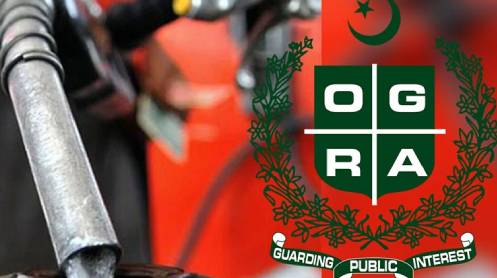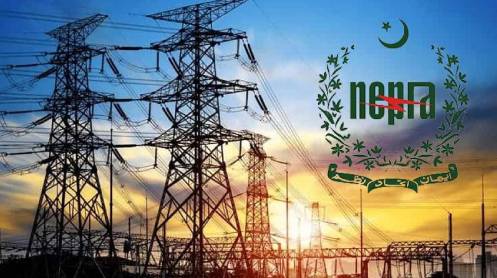With receivables of the state-run Pakistan State Oil (PSO) already at a backbreaking Rs600 billion record and counting, the Petroleum Division has reported a gross liquidity requirement of about Rs1.98 trillion for the first quarter of the next fiscal year beginning July 1 for fuel imports to minimise the prevailing loadshedding.
The PSO and Pakistan LNG Limited (PLL) are importing liquefied natural gas (LNG) to minimise the shortfall in the demand and supply of gas. Re-gasified LNG is supplied by the Karachi-based Sui Southern Gas Company (SSGC) and Lahore-based Sui Northern Gas Pipelines Limited (SNGPL) to consumers, including the power sector, in summer months.
During June to September this year, maximum LNG of 12-cargos each month is planned to be imported for supply to the power sector to minimise electricity loadshedding. PSO’s plate is full with six cargos each month through a long-term contract with Qatar. PLL, on the other hand, has three term cargos each for July and September and one in August, while spot cargos are planned at three each in June, July and September and five cargos in August.
Spot cargos are still subject to be confirmed through tenders and timely opening of letters of credit (LCs) and payments to LNG suppliers. SNGPL has planned to supply 720 to 780 million cubic feet per day (mmcfd) to the power sector, whereas PLL will be ramping up its direct supplies to K-Electric from 62mmcfd in July to 130mmcfd in October to run its new power plant at full capacity.
Due to the Russia-Ukraine situation and international demand-supply dynamics, the price of one spot LNG cargo is hovering around Rs15-16bn, enhancing the liquidity requirement of LNG importers. Besides LNG import, PSO is also importing furnace oil to meet the power sector’s demand, which is adding to its financial constraints.
PSO and PLL have placed their estimated liquidity requirement during summer months under which PSO would need a total of Rs1.7tr at a rate of Rs427bn in June, Rs445bn in July, Rs413bn in August and Rs414bn in September for both LNG and furnace oil.
PLL, on the other hand, has sought a total of Rs278bn for four months, including Rs98bn during the current month, Rs44bn in July, Rs80bn in August and Rs56bn in September.
In-depth discussions with all stakeholders suggest that based on projected receipts of PSO and PLL from SNGPL, SSGCL, power sector and credit lines available with the companies, it was estimated that there will be still an average shortfall of Rs52bn per month.
The liquidity shortfall was, however, anticipated due to variety of factors like delayed payments by the power sector to SNGPL on account of RLNG supply to power plants as only 28pc payments were made by the Central Power Purchasing Agency (CPPA) on behalf of distribution companies in May against total invoices. Also, there were delays in income tax refund to SNGPL, resulting in further delay in payment to PSO and PLL.
This shortfall will aggravate the prevailing liquidity crunch of SNGPL, PSO and PLL, making fuel supply chain vulnerable, according to the Petroleum Division.
It may be recalled that the Economic Coordination Committee (ECC) of the cabinet had in May 2018 and October 2020 ordered SNGPL to divert LNG during winter months to domestic consumers having much lower tariff, while the Oil and Gas Regulatory Authority (Ogra) was directed to allow recovery of RLNG diversion cost differential through monthly RLNG pricing.
However, the regulator did not agree, saying the government should fund the RLNG tariff differential through budget because it would not be fair and equitable to cross-subsidise RLNG consumers. Therefore, recovery of diversion cost of RLNG has built up Rs162bn circular debt in the gas sector on SNGPL’s account, impacting SNGPL’s ability to pay to PSO and PLL against RLNG supply.
With this on the one hand, PSO is struggling with oil supply management and international banks show reluctance in facilitating PSO’s LCs. In a report to the federal government, the cash-starved leading fuel supplier has said its total receivables crossed Rs600bn mark on June 15, up from Rs520bn exactly two months ago on April 15. Power sector, gas utilities and other public sector entities and the government itself hold back large amounts on various counts. That leaves the company’s financials in shambles and its financial managers in awe.
As a consequence, PSO has a build-up of its necessary payables of more than Rs352bn on June 15, up from Rs265bn two months ago. These payables also include Rs300bn to foreign long suppliers of natural gas, petroleum products and matured letters of credit. Some of these LCs or standby letters of credit are strategically critical, a senior official told Dawn.
About Rs52bn is payable to local fuel suppliers led with Rs26bn by Pak-Arab Refinery, Rs10.5bn by Pakistan Refinery, Rs7.5bn by Attock Refinery, Rs6bn by National refinery and Rs1.7bn by ENAR Petrotech.
PSO sources said the largest recoverable amount of Rs310bn was pending against SNGPL, up from Rs272bn two months ago. This was followed by Rs6.8bn against SSGCL. Thus total dues on account of LNG against the two gas utilities stood at Rs317bn now against Rs279bn two months ago.
This was followed by Rs177bn total outstanding against power companies, including Rs147bn against state-owned entities, Rs22bn against Hubco and Rs8bn against Kapco. Another Rs105bn is payable by other government accounts which has increased from Rs73bn two months ago. These include Rs23bn against PIA, Rs45bn claims against the government and Rs28bn exchange rate adjustment against the government.





